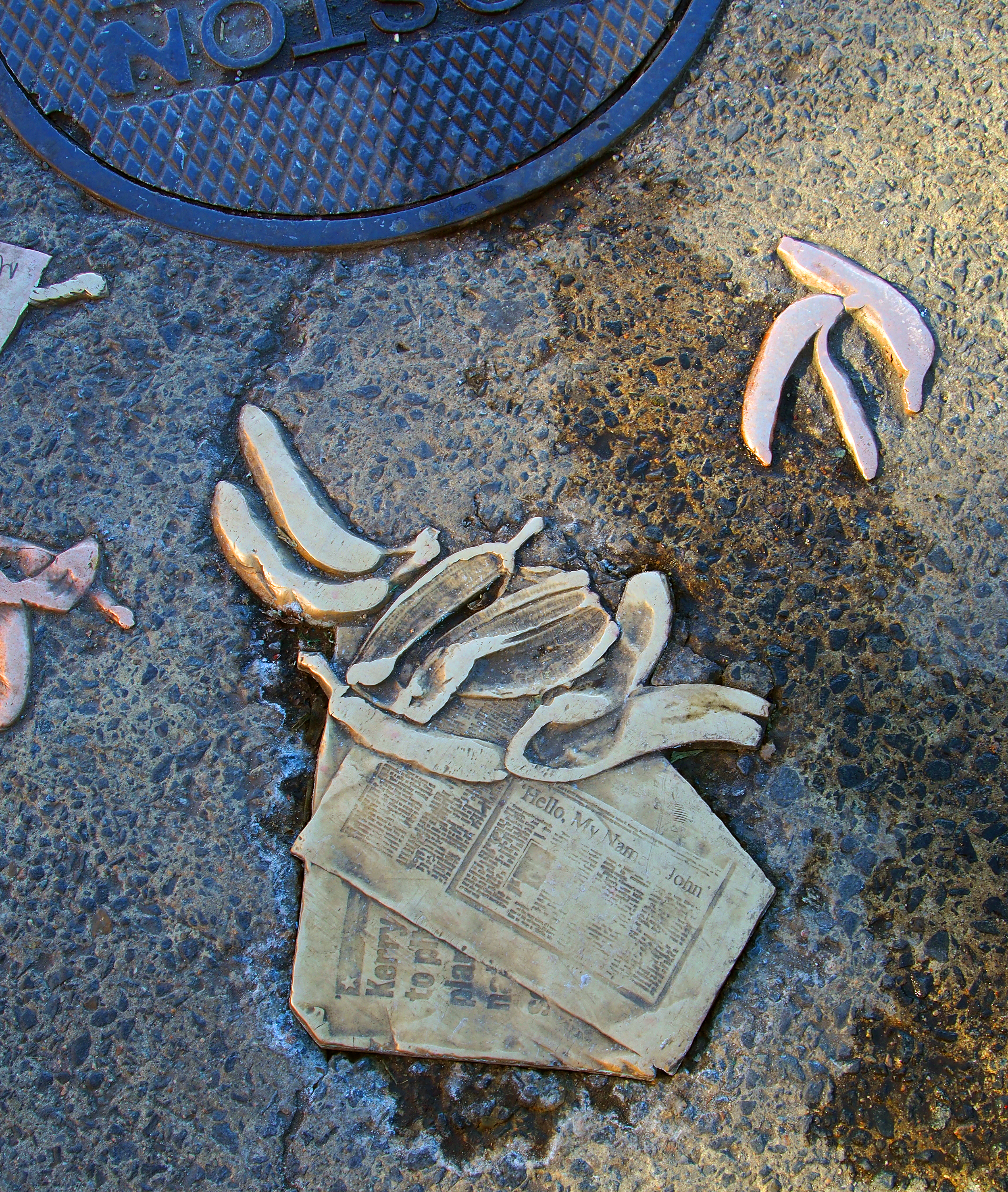There’s garbage and trash strewn around Boston’s outdoor market in the vicinity of Haymarket and Hanover Streets, but it’s not your average scattering of compostable material. The refuge is made out of brass. It’s an inlaid sculpture known as Asaroton or “unswept floor”, and when the market’s in full swing, the real debris often mixes with the art, creating an even stranger experience for anyone who happens to be looking down. The artwork was created in 1976, moved for a while during Boston’s Big Dig, and reinstalled in 2006. So the next time you happen to be visiting the market discriminating the fruits and vegetables, make sure to look around every once in a while, and see what you can see.
Congregational House
Congregational House was built in 1898 as a headquarters for the Congregational churches and to provide space for their historical library. Designed by the architectural firm Shepley, Ruttan, and Coolidge, 14 Beacon Street is on the National Register of Historical Places, and part of the Park Street Historic District. It’s located across the street from the Massachusetts State House.
The exterior façade includes four marble bas reliefs illustrating the core values of the Congregational tradition: Religious Freedom, depicted by the Pilgrims' observance of the Sabbath on Clark's Island on December 20, 1620; Equality Under the Law, showing the Pilgrims signing the Mayflower Compact; Education, the founding of Harvard College in 1636; and Philanthropy, signified by a tableau of John Eliot preaching to Native Americans in the settlement in Nonantum in 1642. All the bas reliefs are done in Knoxville marble, known for its delicate pinkish gray hue. The artist, Domingo Mora, also worked on the exterior of the Boston Public Library.
On the second floor, the library's Reading Room is a beautifully-appointed space for researchers, with windows overlooking Boston's famous Granary Burial Ground. The adjoining conference room was named in honor of S. Brainard Pratt, a Bible collector and generous benefactor of the Library. Originally known as the "Biblearium," the Pratt Room still houses portions of Pratt's internationally known collection of Bibles and curiosities, as well as relics from the Scrooby church in England (former home of the Plymouth Pilgrims) and a piece of Plymouth Rock.
When the majority of Congregational churches merged to form the United Church of Christ in 1957, most of the building's original tenants moved to new denominational headquarters in New York City and later Cleveland. Congregational House continues its mission of service to the community by providing affordable space for a wide variety of not-for-profit organizations.
Exterior Bronze Panels at 75 Federal Street, Boston, Massachusetts
These bronze panels are located on the building at 75 Federal Street, Boston, Mass. Originally known as The Second National Bank of Boston, it's now called 75-101 Federal Street. The building was finished in 1929 and is in the Art-Deco style. Art-Deco began in France and incorporated motifs on exterior walls depicting leaves, flowers and shapes. The style evolved to exhibit human accomplishments and progress. The bronze panels on this building depict, manufacturing, agriculture, and construction.














